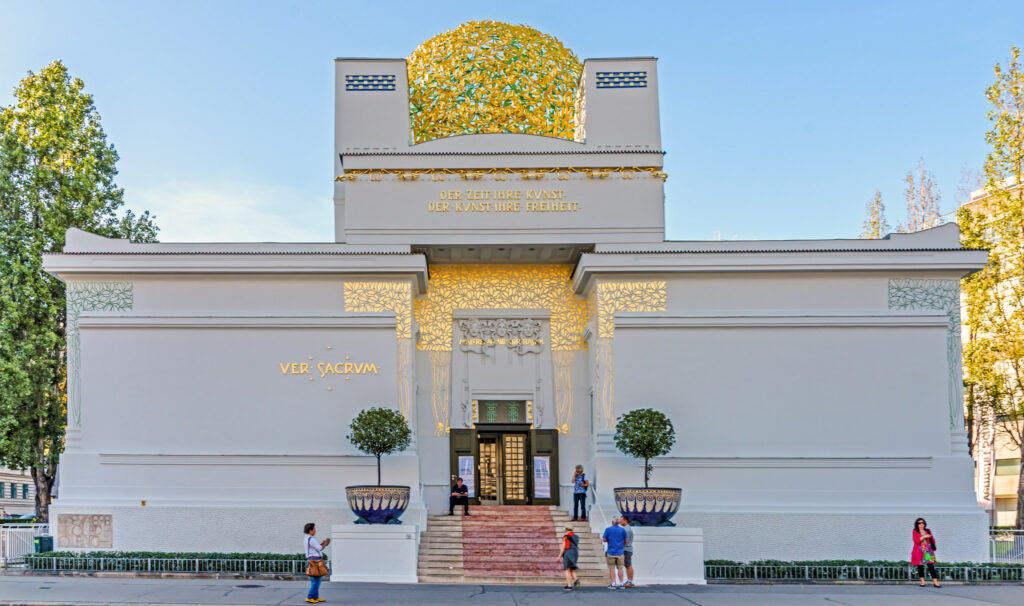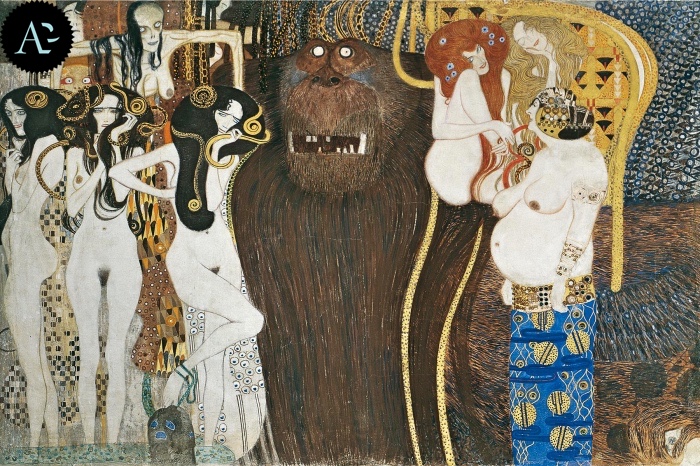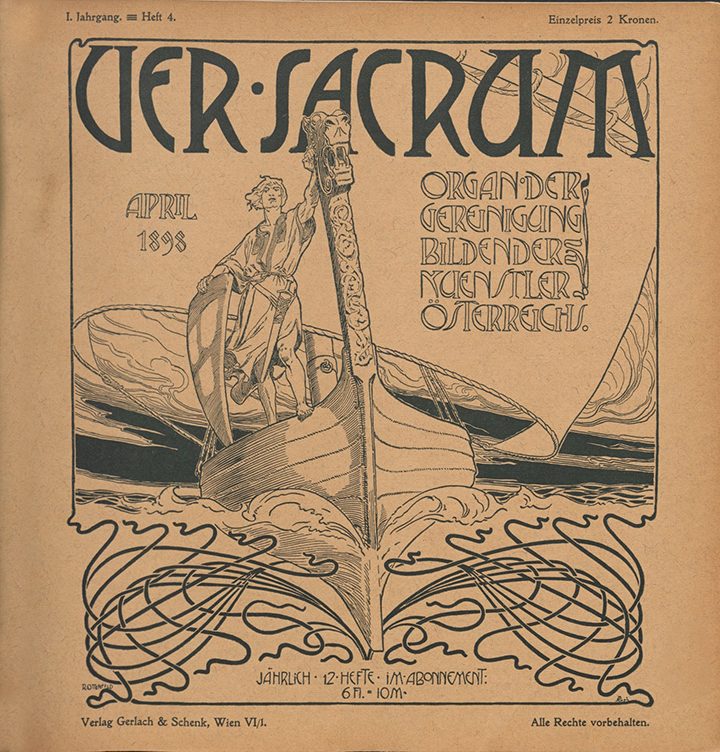
Have you ever heard of the Vienna Secession? This artistic movement, which came to life in Austria at the end of the 19th century, represents one of the most interesting moments in 19th century European art. Under the leadership of iconic figures such as Gustav Klimt and Otto Wagner, a group of rebellious artists and architects created a cultural revolution that changed the face of art and architecture in Vienna forever.
The Artistic Revolution of the Viennese Secession

Klimt, il Fregio di Beethoven (dettaglio), nel Palazzo della Secessione Viennese
The path of the Viennese Secession is rooted in a climate of profound change. In the mid-19th century, Vienna’s cityscape was expanding.
The old city walls were demolished in 1857 to make way for the Ringstraße, a grandiose thoroughfare that encompassed the historic city core, where magnificent eclectic buildings were erected. This urban transformation culminated in 1894 with the promotion of the construction of the underground railway, an architectural challenge that integrated viaducts, administrative buildings and no less than twenty-five stations.
The flourishing of Art Nouveau works, objects and decorations was stimulated by a wealthy clientele of bourgeoisie and state officials, who favoured the building of houses and cultural salons inspired by the Rosenhäuser, the museum villas, particularly outside the city centre.
THE BEGINNING OF A NEW ERA: THE BIRTH OF THE VIENNESE SECESSION
The spark that ignited the Vienna Secession arose from the desire of nineteen artists and architects to escape the conservatism of the Academy of Fine Arts. Thus was born the Wiener Secession, based in the Vienna Secession Building, giving birth to the Sezessionstil, or Secession Style.
The catalyst event was an exhibition entitled ‘Arts and Crafts’ held in London in 1888, which seemed to have sown the seeds of Secessionism in the hearts of the creative Viennese.
WIENER WERKSTÄTTE AND THE EVOLUTION OF APPLIED ART
1903 saw the birth of the Wiener Werkstätte, the Viennese Workshops, founded by Josef Hoffmann, Koloman Moser and Fritz Waerndorfer. This was not just a manufacturing company, but a creative community that aspired to revolutionise interior design, integrating the aesthetics of the Viennese Secession with those of Art Nouveau and Arts and Crafts. Among the most famous works are the wall hangings designed by Kolo Moser, which embodied the essence of this artistic union.
A UNIVERSAL AND REVOLUTIONARY LANGUAGE
The Sezessionstil was not just a style, but a universal language that found correspondences in Art Nouveau in France, Jugendstil in Germany, Liberty in Italy, Modern Style in Austria, and Modernism in Spain.
This current represented a response to the need for more personal expression felt by society at the time.
In 1898, the Viennese Secession found a voice in the magazine Ver Sacrum, or Sacred Spring, founded by Gustav Klimt and Egon Schiele, together with other leading artists and architects. This publication emphasised the revolutionary soul of the movement, promoting the ideal of the Gesamtkunstwerk, or Total Work of Art.
The architects and artists of the Vienna Secession, led by figures such as Otto Wagner and Gustav Klimt, occupied prominent positions in the city’s cultural scene, pushing the boundaries of artistic expression beyond the conventions of the time.

The exceptional legacy of the Viennese Secession lives on through the works of successive artists and architects, making this movement a landmark in the evolution of modern art.
The Viennese Secession is not just a chapter in artistic history, but a lesson in how art can challenge the status quo, inviting us to see the world with new eyes.

